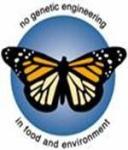Failed Ruakura GE Animal Research Site Poses a Health Risk
In June 2025, the AgResearch genetically engineered (GE) animal experimentation, at Ruakura, ended but monitoring and testing of the site's offal pits and soil has not been enforced by the EPA. This raises concerns of long-term GE microbial contamination that could impact future land use. [1]
The GE animals were disposed of in 60 pits, each 7 metres deep and unlined. The soil and ground in Ruakura was sprayed with unwanted milk that also contained the products of aborted foetuses that contained GE constructs. [2]
The GE contaminated Ruakura land is being returned to the Tainui iwi. Tainui Group Holdings will develop a Super Hub with a large industrial centre, and residential housing for families. [3]
“This should be considered a contaminated site with the potential of new and virulent soil microorganisms that could threaten health of animals and humans,” said Claire Bleakley, president of GE Free NZ.
“To scientifically assure the public of the safety of the area there must be comprehensive testing for any transfer of genetic elements and heritable material to other organisms in or around the site.”
GE Free NZ wrote to the EPA to ask what enforcement for clean-up of the GE contaminated site was undertaken. They replied that they had no responsibility for it.
The requirement at the end of a field trial is to "remove all heritable material" or let it break down over time. [4] The soil and surrounding environment, however, has not been tested for any contaminating transgenic material that could endanger the health of the people who work and will live there.
"Passing the buck on GE regulation at trial sites is not good enough. Clarification on clean up and does the responsibility now fall on Councils and will the costs of any testing and clean-up be carried by the ratepayers and not AgResearch or the Bioeconomy Science Institute?" said Bleakley
The GE animals were engineered to produced proteins in their milk or to alter their genetics to make them gender specific. The engineering led to significant animal welfare issues, suffering and lifelong deformities with respiratory, uterine and udder inflammation, arthritis and sterility. This led to a high level of euthanasia’s on veterinary advice.
“There are thousands of contaminated sites across NZ, [5] and the GE Animal Ruakura site adds Genetically engineered organisms (GE) to the list posing a high risk due to their genetic mutations and soil microbial ecosystems,” said Bleakley
“We call on the EPA to enforce the legal requirement of testing of Horizontal Gene Transfer for genetically engineered constructs to prove that there is no risk of potential harm to people and children who work and will live at the site in future, before further development on the Ruakura site in undertaken,”
References:
[1] https://www.epa.govt.nz/assets/FileAPI/hsno-ar/ERMA200223/ERMA200223-2025-AgResearch-cattle-sheep-and-goats-annual-report-v3.pdf
[2] https://www.gefree.org.nz/assets/pdf/GE-Animals-in-New-Zealand.pdf
[2b] https://www.gefree.org.nz/assets/Uploads/GE-Animals-in-NZ-Part-2-FIN-WEB.pdf
[3] Ruakura Super Hub https://www.ruakura.co.nz/
[4] Hazardous Substances and New Organisms Act 1996, section 45A https://www.legislation.govt.nz/act/public/1996/0030/latest/DLM383587.html
[5] https://environment.govt.nz/assets/Publications/Files/contaminated-land.pdf
